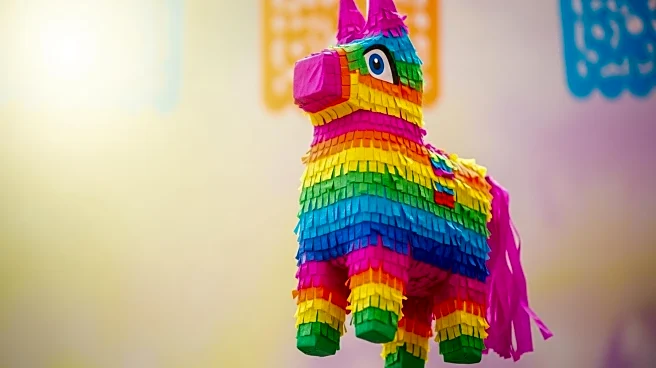What is the story about?
What's Happening?
The global confectionery market is experiencing significant growth, with projections indicating it will reach $278 billion by 2032. Currently valued at $206 billion, the market is driven by non-chocolate confectionery, which is growing at a faster rate than the overall category, with a 5.5% compound annual growth rate (CAGR). Chewy candy leads non-chocolate sales, accounting for 50% of the market share. Seasonal events such as Halloween and Easter contribute to peak candy sales, while Gen Z and Millennials show a preference for sour, spicy, and experimental flavors. Despite the rise in non-chocolate confectionery, chocolate remains dominant, with a market value of $123 billion and expected growth to $184 billion by 2033.
Why It's Important?
The growth of the confectionery market reflects changing consumer preferences and the enduring appeal of candy and chocolate. The rise in non-chocolate confectionery suggests a shift towards diverse flavors and textures, appealing to younger generations. This trend presents opportunities for manufacturers and retailers to innovate and capture market share. Seasonal sales peaks highlight the cultural significance of confectionery in celebrations, while the focus on flavor experimentation and health-conscious snacking indicates evolving consumer priorities. The market's expansion could impact related industries, including agriculture, packaging, and retail.
What's Next?
As the confectionery market continues to grow, brands that embrace flavor experimentation, texture variety, and seasonal relevance are likely to succeed. The competitive landscape is evolving, with non-chocolate confectionery gaining ground. Manufacturers and retailers may focus on health-conscious snacking, plant-based ingredients, and novel formats to attract consumers. The industry is poised for dynamic growth, offering opportunities for investment and innovation.
Beyond the Headlines
The confectionery market's growth may have broader implications for public health, as increased candy consumption could impact dietary habits. Ethical considerations around sourcing ingredients and environmental sustainability may also arise as the industry expands. The cultural significance of confectionery in celebrations underscores its role in social and economic activities.
AI Generated Content
Do you find this article useful?













